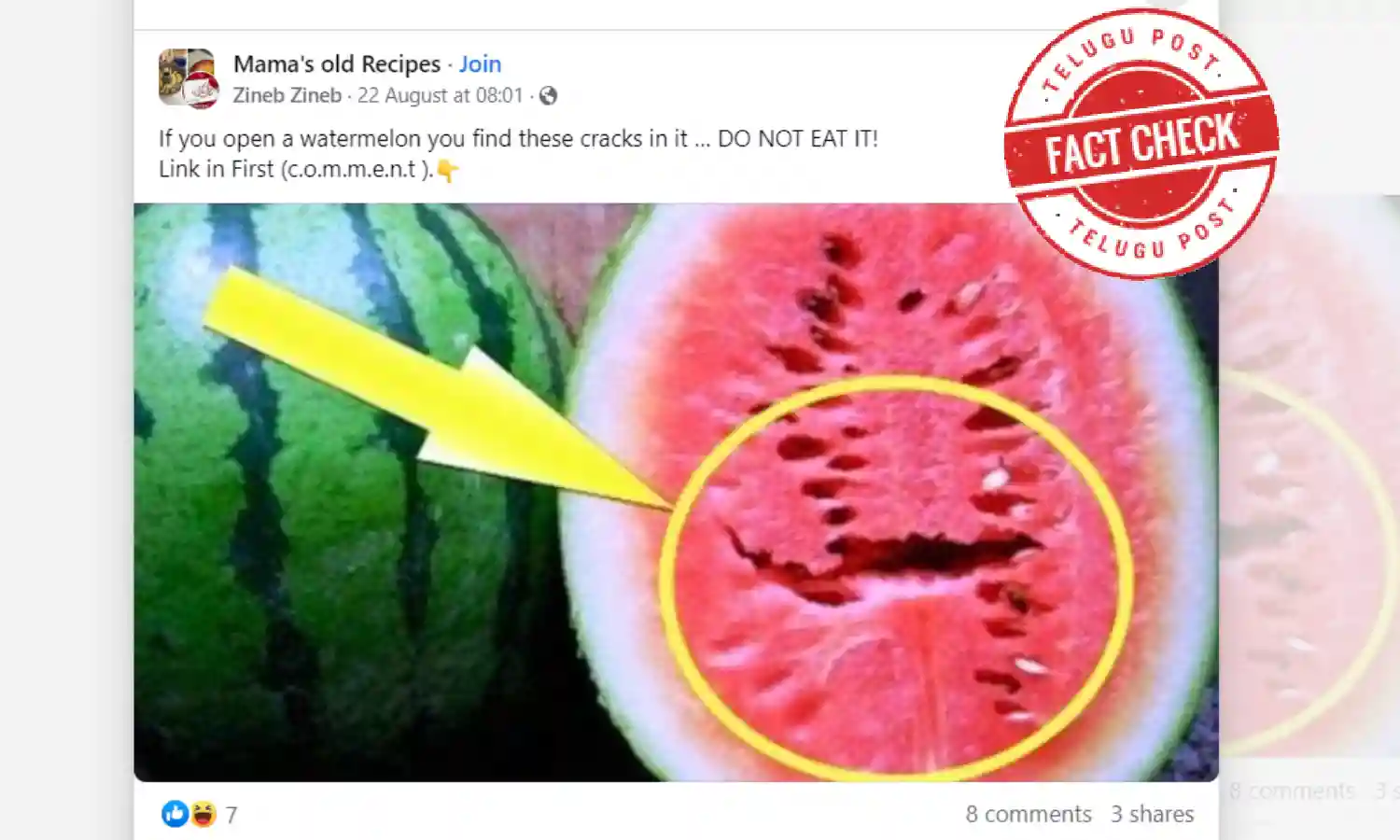Fact Check: Cracks in watermelon are not caused by pesticides but due to improper pollination
A few Facebook posts claim that if cracks are seen in a sliced watermelon, then it is dangerous to eat.;

Cracks in watermelons
A few Facebook posts claim that if cracks are seen in a sliced watermelon, then it is dangerous to eat. The caption on the posts is “If you open a watermelon you find these cracks in it ... DO NOT EAT IT! Link in First (c.o.m.m.e.n.t ).”
We can see some Facebook posts here and here.
Few more links that share the claim.
The link in the comments of these posts takes us to an article published on a website named elkoukii.com, which makes the same claim. The article claims that watermelon is primarily made up of water, which is excellent for health due to its diuretic properties. Watermelons are amazing but there are instances where it might not be as beneficial. It's surprising but there are moments when consuming watermelon might lead to health concerns. Being aware of its properties and ensuring its freshness is essential, so if anything seems out of place, it's best to set it aside to avoid any potential health issues.
The social media posts and blogs imply that if a watermelon has cracks in it, then consuming it can cause tumors in human beings.
Fact Check:
The claim is false. The cracks may be due to a natural condition or a defect in the watermelon.
When we searched using the keywords “cracks in watermelon”, we found several articles which state that the cracks in the watermelon are caused due to inadequate pollination. A crack in the watermelon is known as Hollow Heart.
Hollow heart is caused by inadequate pollination, according to researchers at the University of Delaware. This means not enough pollen is provided by bees, wasps, and other nectar-seeking insects, who hop from plant to plant. This can be due to fluctuations in temperature, particularly during the critical pollination period; insects are less likely to be active in colder or wetter temperatures.
As hollow heart isn’t a disease, but a problem in the pollinating process, if your watermelon is affected by the issue then it should still be safe to eat, according to the experts. In fact, they may taste even sweeter than an unblemished fruit because their natural sugars are concentrated along the cracks in the flesh.
According to watermelon.org, which is a website of the National Watermelon Promotion Board, USA, sometimes the growing conditions, including cold snaps and heat waves, will cause an internal cracking of the flesh, a condition known as Hollow Heart. Not to worry – these watermelons are perfectly safe to eat, and they often taste sweeter as sugars are more concentrated along the cracks.
Phys.org states that the University of Delaware's Gordon Johnson performed a 2014 progressive pollinizer spacing study that showed that increasing the distance from a pollen source increased the incidence of hollow heart and reduced flesh density.
There is no scientific evidence that the use of pesticides causes cracks in watermelons. Whereas, research proves that the cracks called hollow hearts in watermelons can be caused by inadequate pollination and other natural causes. The claim is false.

